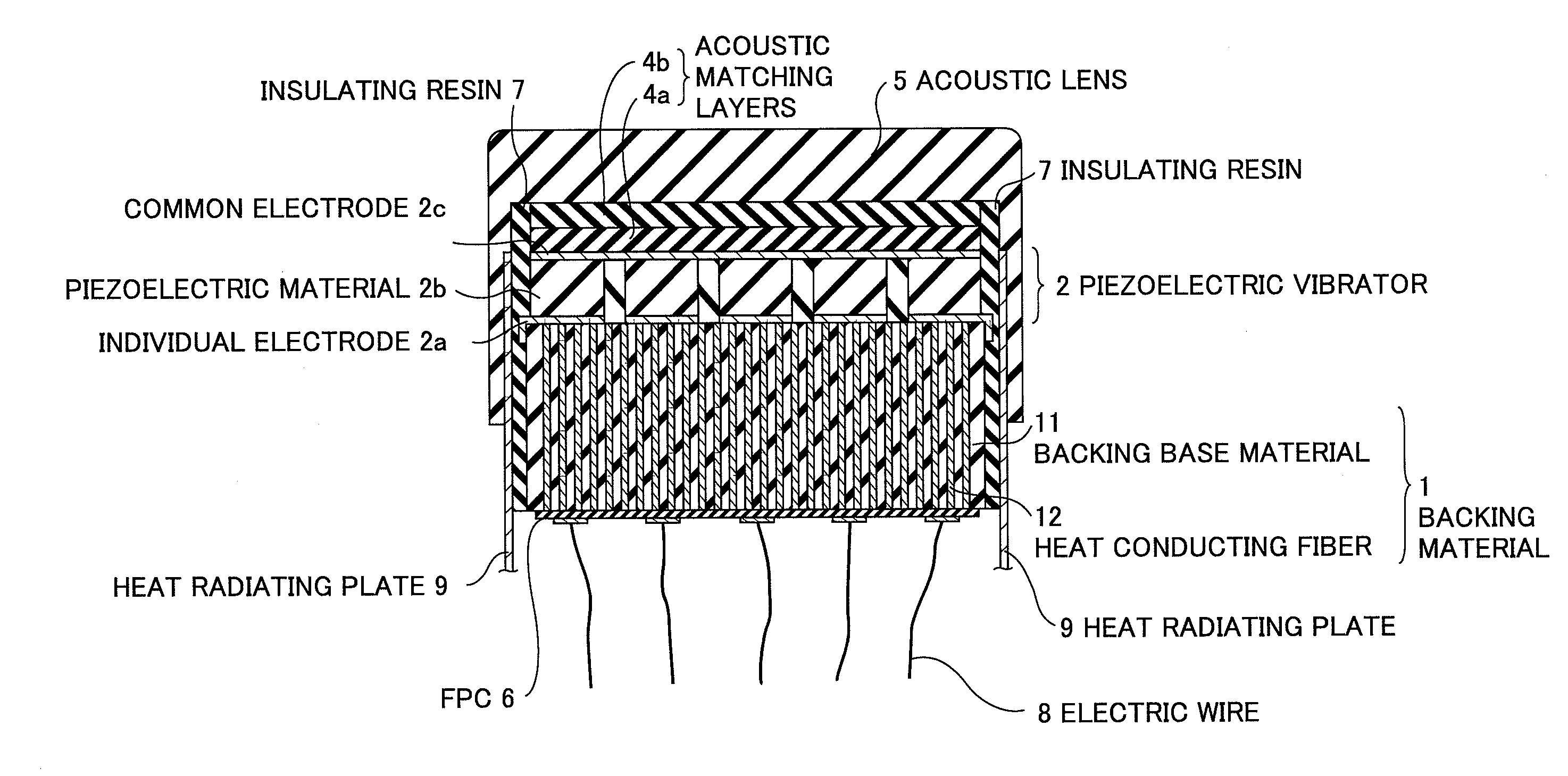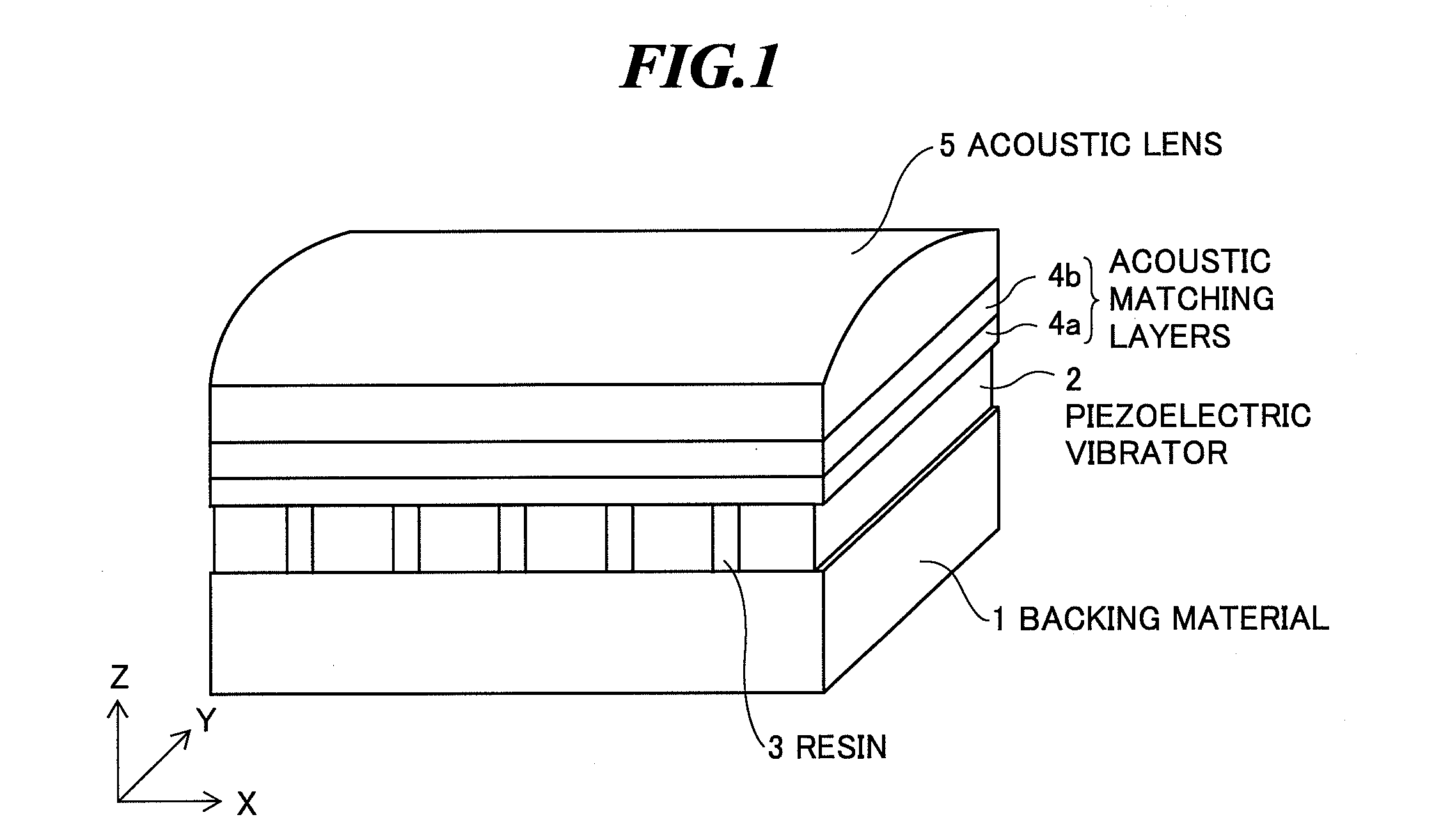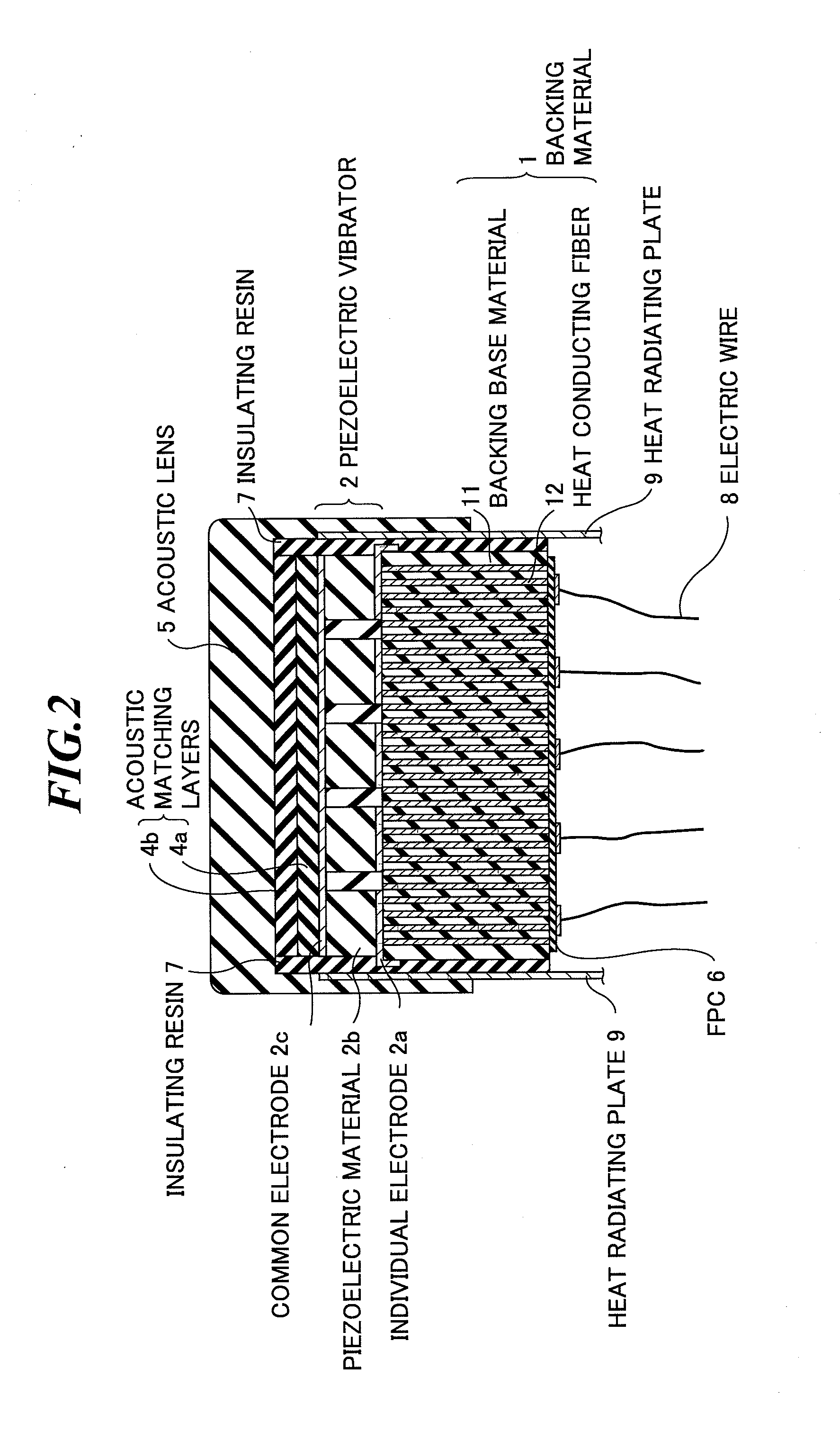Backing material, ultrasonic probe, ultrasonic endoscope, ultrasonic diagnostic apparatus, and ultrasonic endoscopic apparatus
- Summary
- Abstract
- Description
- Claims
- Application Information
AI Technical Summary
Benefits of technology
Problems solved by technology
Method used
Image
Examples
first embodiment
[0040]FIG. 1 is a perspective view schematically showing an internal structure of an ultrasonic probe according to the present invention, and FIG. 2 is a sectional view of the internal structure of the ultrasonic probe shown in FIG. 1 along a plane in parallel with the YZ-plane. The ultrasonic probe is used in contact with an object to be inspected when extracavitary scan is performed or used by being inserted into a body cavity of the object when intracavitary scan is performed.
[0041]As shown in FIGS. 1 and 2, the ultrasonic probe has a backing material 1, one or plural ultrasonic transducers (piezoelectric vibrators) 2 provided on the backing material 1, resins 3 provided between those piezoelectric vibrators 2, one or plural acoustic matching layers (two acoustic matching layers 4a and 4b are shown in FIGS. 1 and 2) provided on the piezoelectric vibrators 2, an acoustic lens 5 provided on the acoustic matching layers according to need, two flexible printed circuit boards (FPCs) 6...
second embodiment
[0059]FIG. 5 is a sectional view showing an internal structure of the ultrasonic probe according to the present invention. As shown in FIG. 5, a piezoelectric vibrator 2 includes an individual electrode 2a formed on the backing material 1, a piezoelectric material 2b of PZT (Pb(lead) zirconate titanate) or the like formed on the individual electrode 2a, and a common electrode 2c formed on the piezoelectric material 2b. Typically, the common electrode 2c is commonly connected to the ground potential (GND).
[0060]In the second embodiment, the backing material 1 includes a backing base material 13 having electric insulation properties, and heat conducting fibers 14 having electric conductivity provided in the backing base material 13. Here, the heat conducting fibers 14 have higher heat conductivity than that of the backing base material 13. The individual electrode 2a of each piezoelectric vibrators 2 is electrically connected to two or more heat conducting fibers 14 having electric co...
fourth embodiment
[0073]FIG. 7 shows measurement results of surface temperature of the ultrasonic probe according to the present invention in comparison with those in a conventional case. The measurement was made by measuring the surface temperature of the acoustic lens in the air at a temperature of 23° C. FIG. 7 (a) shows a temperature distribution in the X-axis direction, which passes through the point of peak temperature on the surface of the acoustic lens, and FIG. 7 (b) shows a temperature distribution in the Y-axis direction, which passes through the point of peak temperature on the surface of the acoustic lens.
[0074]The peak temperature T3 on the surface of the acoustic lens of the ultrasonic probe using a conventional backing material containing no heat conducting fibers is 43° C., while the peak temperature T4 on the surface of the acoustic lens of the ultrasonic probe using the backing material containing heat conducting fibers according to the embodiment is 26° C. Accordingly, it is known...
PUM
 Login to View More
Login to View More Abstract
Description
Claims
Application Information
 Login to View More
Login to View More - R&D
- Intellectual Property
- Life Sciences
- Materials
- Tech Scout
- Unparalleled Data Quality
- Higher Quality Content
- 60% Fewer Hallucinations
Browse by: Latest US Patents, China's latest patents, Technical Efficacy Thesaurus, Application Domain, Technology Topic, Popular Technical Reports.
© 2025 PatSnap. All rights reserved.Legal|Privacy policy|Modern Slavery Act Transparency Statement|Sitemap|About US| Contact US: help@patsnap.com



